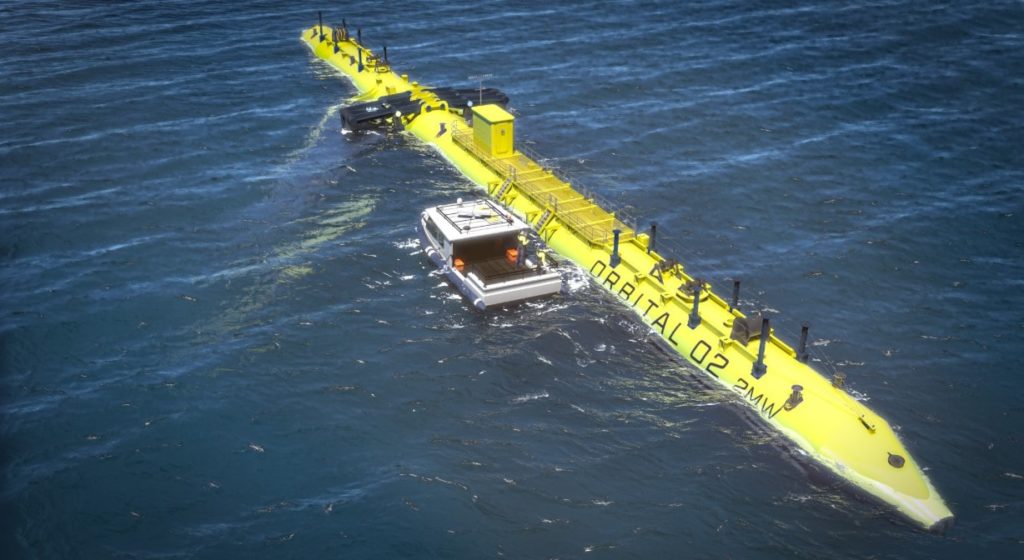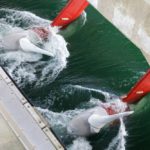Features - Business
Scotland’s Floating Tidal Turbine

How are governments now approaching global warming and renewable energy?
As of June 2019, Britain has made the landmark pledge to have a net carbon output of zero by 2050, becoming the first nation in the world to make such a promise. Further to this, the British government will play host to the Green GB Week in November to encourage the country, in its entirety, to make strides in becoming more environmentally conscious.
One potential energy resource which can help the government to achieve its target is tidal energy. Britain has dabbled in tidal energy previously, with a tidal energy station at Stangford Lough in Northern Ireland, but currently has no operational stations despite a great many locations. The Severn, Dee, Solway, and Humber estuaries, to name a few, would be ideal sites for stations. In fact, it is estimated that Scotland possesses a third of Britain’s tidal stream resources and two thirds of Britain’s waves resources.
So, as a means of utilising this untapped potential, the Scottish Government has formulated the £10M Saltire Tidal Energy Challenge Fund which aims to support the development of tidal energy in Scotland through driving innovation and reducing costs. The fund was officially announced in February 2019, with bids closing in December, and the first recipient of investment from the fund was named as the O2 2MW Floating Tidal Energy Turbine, receiving £3.4M.
What is the O2 2MW Floating Tidal Energy Turbine?
The O2 2MW Floating Tidal Energy Turbine will be a suspended energy generation apparatus, situated in the Northern Atlantic Ocean, installed at the European Marine Energy Centre in Orkney. The project consists of a 72m long frame connecting two 1MW turbines with rotor diameters of 20m each and a 600sq m rotor area. These turbine rotors will be the largest ever constructed on a single tidal energy generation platform to date and will be able to turn 360 degrees in order to allow power to be extracted from both tidal directions.
The company behind the design and installation of this colossal structure is Orbital Marine Power Ltd, an engineering company that was founded in Orkney in 2002. The turbines themselves will be manufactured by the Scottish company, the Texo Group, at their new quayside facilities in Dundee while the key components will be delivered by Gray Fabrication in Cupar, using materials provided by Liberty Steel who are situated in Motherwell.
And lastly, FAUN Trackway have been appointed to manufacture the anchors for the floating turbine which will keep the structure suspended in a single position. Construction taking place at their facilities in Llangefni in North Wales.
How will people in Scotland benefit from the floating turbine project?
The new technology will offer a low cost solution to the global climate emergency through creating the world’s most powerful floating tidal turbine. Energy provided through the station will be safe, simple, easy to maintain, cheap to maintain, and will be accessible, for all offshore operations, through small, specially-designed workboats.
Ultimately, the turbines will be capable of generating enough power to supply more than 17,000 homes per year, with Orbital boasting the first connection of a floating tidal turbine to a power grid after their 250kW scale system operated at EMEC in 2011.
What is needed to carry out the floating turbine project?
The most fundamental need for this project is that of funding, with the aforesaid £3.4M from the Scottish Government’s Saltire Tidal Energy Challenge Fund being bolstered by funding from the European Union’s Horizon 2020 research and innovation programme as well as the framework of the OCEANERA-NET COFUND project.
Furthermore, as a means of obtaining the financial resources required for such a large-scale project, Orbital Marine Power Ltd opened a £7M crowd funding debenture at the London-based Abundance Investment Platform in October 2018, with the target being met within a matter of weeks.
With the additional £3.4M, the Orbital project has a guaranteed fund of more than £10M with the amounts from the European Union and OCEANERA-NET COFUND still yet to be disclosed.
What can be resolutely stated is that UK energy independence will play a vital role in achieving the government’s energy targets, while managing to keep the lights on across the nation.
Related Articles
More Features
- Ten years of progress on payment, pre-qualification and skills
19 May 25
The industry has made significant progress on late payment, pre-qualification, and competence since the formation
- Pagabo provides clarity on impacts of new NPPS and PPNs
12 Mar 25
The Labour government’s new National Procurement Policy Statement (NPPS) sets out strategic priorities for public
- How is the Procurement Act going to drive social value
24 Feb 25
The regulations laid out within the Procurement Act 2023 will go live today.






